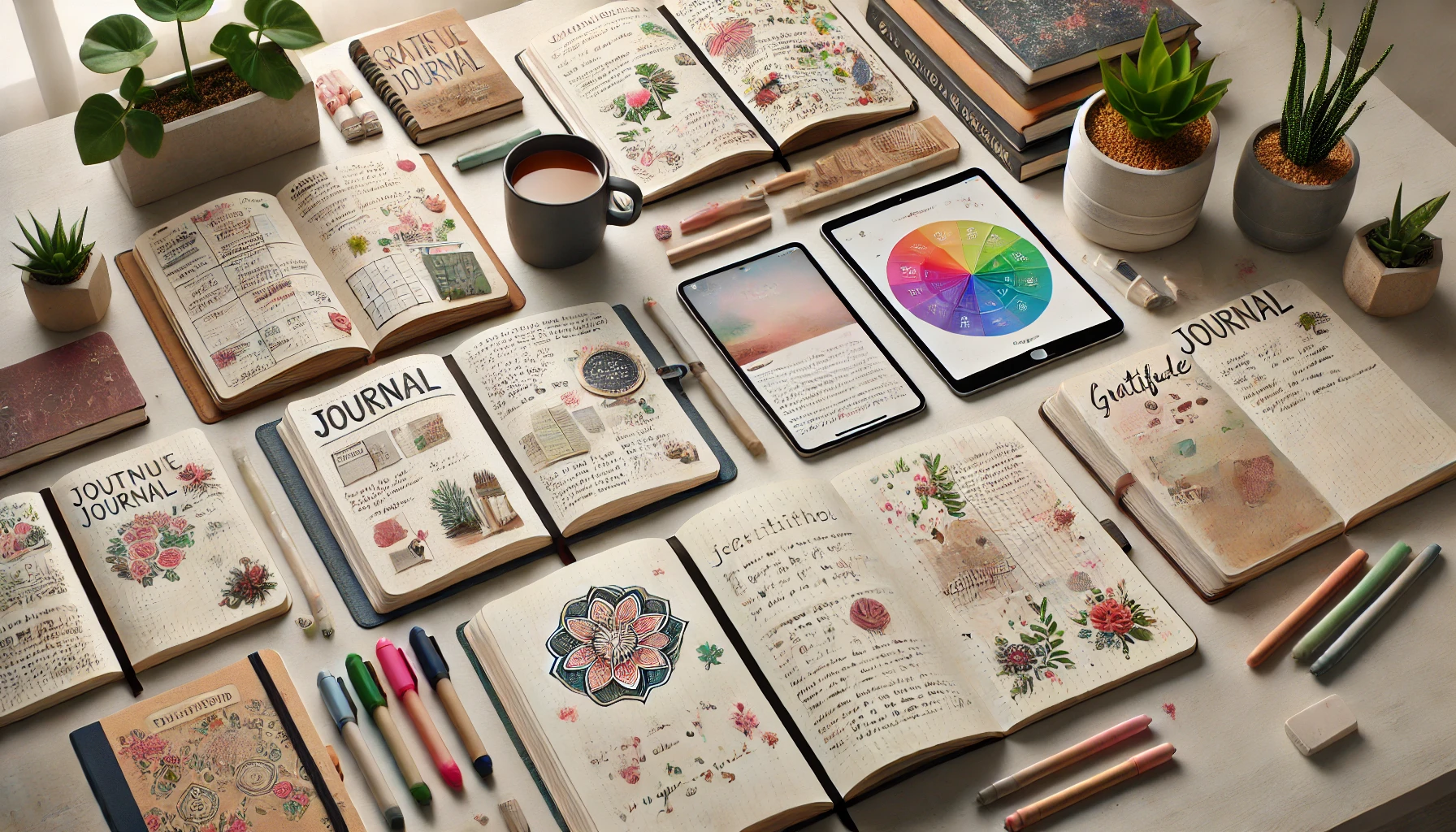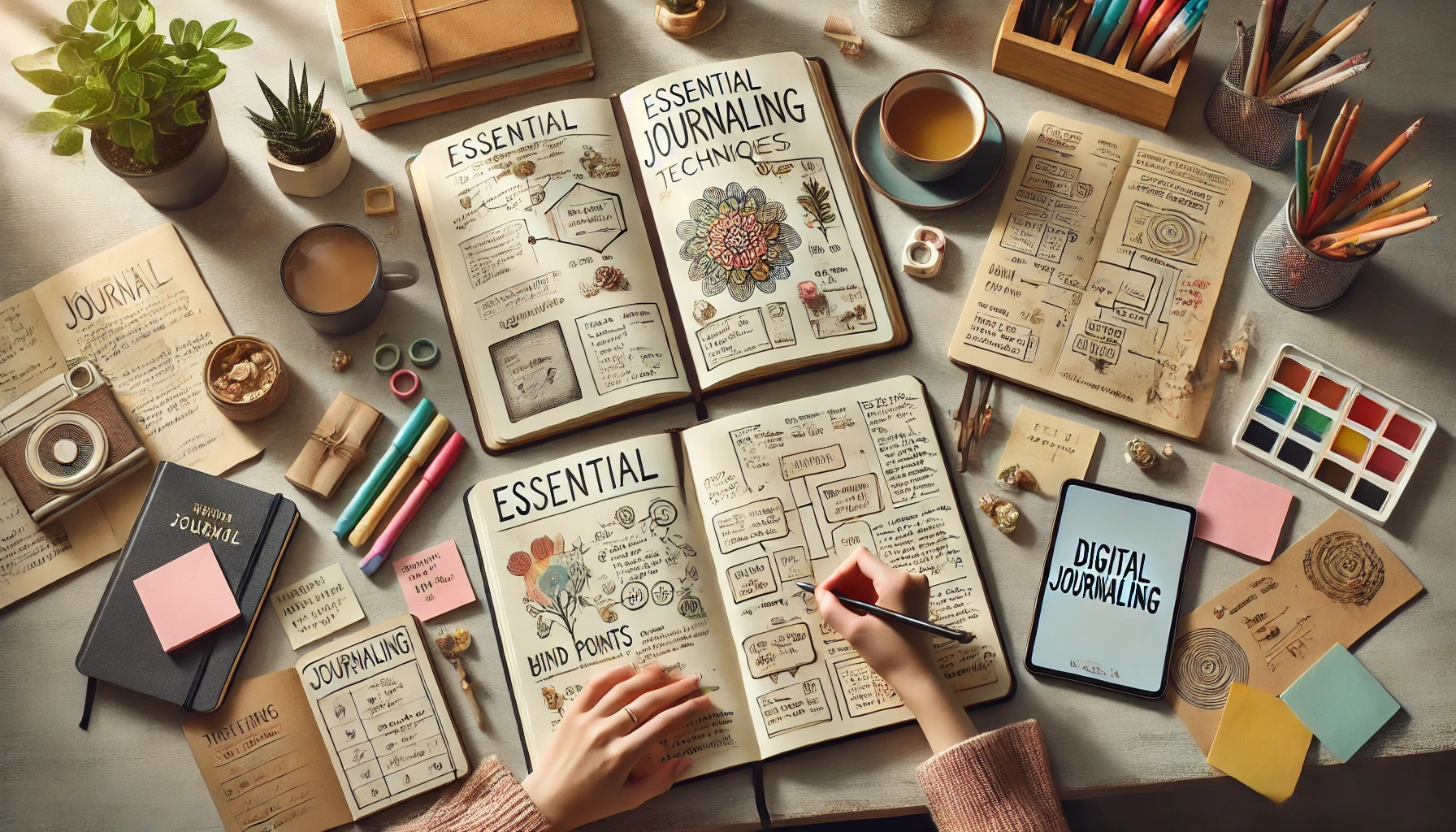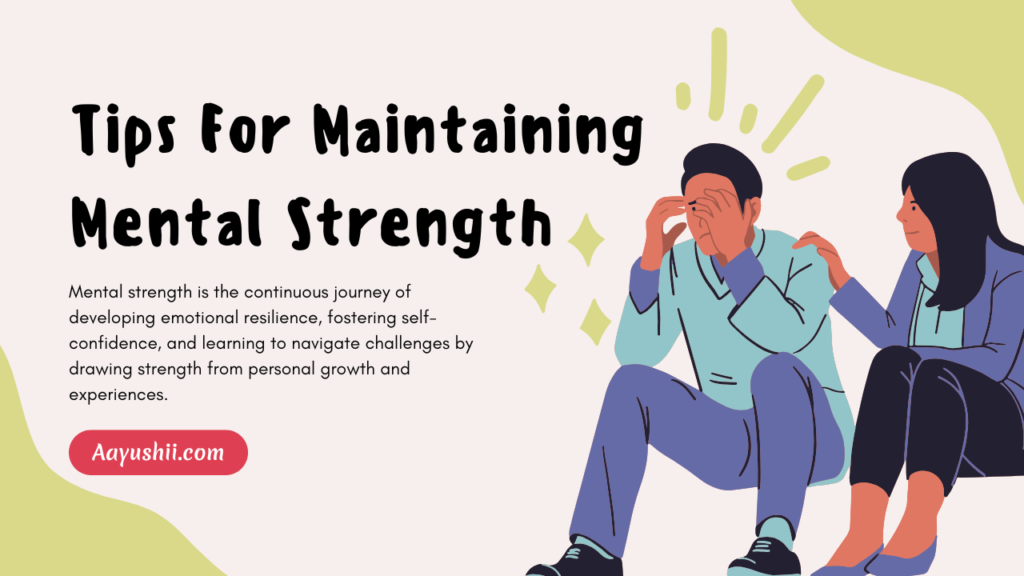In a fast-paced world with constant stimulation from technology, social media, and a never-ending to-do list, it can feel increasingly difficult to find a sense of calm and clarity. Many people are seeking effective ways to process emotions, organize thoughts, and alleviate stress. One practical and timeless method to achieve these goals is journaling. This seemingly simple act of putting pen to paper (or fingers to keyboard) can have profound effects on mental clarity, self-awareness, and overall well-being.
In this comprehensive guide, you will learn everything you need to know about journaling for mental clarity from understanding its benefits and psychological underpinnings, to choosing the right journaling methods, tools, and prompts.
Whether you’re completely new to journaling or looking to refine your practice, this guide will walk you through every step in detail. By the end, you’ll have the knowledge and confidence to create a journaling routine that enhances mental clarity, reduces stress, and improves your sense of self.
Table of Contents
What Is Journaling?

Journaling is the practice of documenting your thoughts, experiences, and emotions on a regular basis. It involves taking the fleeting ideas that move through your mind daily and organizing them into a coherent narrative or record. While traditionally this has meant writing by hand in a notebook or diary, journaling can also be done digitally using apps, word processors, or specialized online platforms.
The essence of journaling lies in self-reflection. By writing down your internal dialogue, you give structure to what might otherwise be unstructured mental chatter. For centuries, people have kept journals or diaries to track ideas, chronicle daily events, or delve into spiritual and emotional processes. Today, journaling serves various purposes: it can be a method of self-discovery, a creative outlet, a therapeutic exercise, or a tool to boost productivity and mental clarity.
Why Journaling for Mental Clarity Matters
Mental clarity is a state in which your thoughts are well-organized and your mind is relatively free from confusion, stress, and emotional overwhelm. When you have clarity, you can make better decisions, communicate more effectively, and feel a greater sense of calm and focus. However, the pressures of day-to-day life can easily clutter the mind. Work deadlines, family responsibilities, and social expectations often compete for mental space, leaving little room for reflection.
This is precisely where journaling can shine. By taking just a few minutes a day to write down your thoughts, you can:
- Declutter the mind: Offload worries, tasks, and ideas so they are not constantly swirling in your head.
- Process emotions: Recognize, understand, and manage feelings that may affect your daily life.
- Clarify intentions: Define personal goals and track progress over time.
- Increase mindfulness: Become more present and aware of each moment.
In essence, journaling gives you the chance to press “pause,” breathe, and collect your thoughts. It’s not just a record-keeping exercise; it is a proactive way to nurture your mental health and emotional well-being.
The Science Behind Journaling
There is growing scientific evidence supporting journaling as a beneficial practice for mental health. Numerous studies in psychology and psychiatry have shown that expressive writing—where individuals write about their deepest thoughts and feelings—can lead to both emotional and physical health improvements. Some key research findings include:
- Reduced Stress: A study published in the journal Advances in Psychiatric Treatment found that writing about emotional or traumatic experiences helps people process them more effectively, reducing stress levels.
- Improved Immune Function: Research published in the Journal of Consulting and Clinical Psychology reported that participants engaging in expressive writing showed improvements in immune system functioning.
- Enhanced Emotional Regulation: Journaling can help people identify triggers for anxiety or depression and better understand their emotional patterns, which can be the first step towards managing them more effectively.
- Better Cognitive Processing: Journaling aids in structuring thoughts, leading to improved clarity and problem-solving skills.
By dedicating time to regular writing, you essentially train your brain to process and organize information more efficiently, which translates into increased mental clarity and resilience.
How Journaling Improves Mental Clarity

Mental clarity manifests differently for each person, but there are several universal ways that journaling can pave the path toward greater clarity, calm, and focus.
1. Emotional Regulation
One of the most significant benefits of journaling is how it fosters emotional regulation. When you’re dealing with a wave of emotions—anxiety, anger, sadness—writing them down can help you see them more objectively. It’s similar to holding up a mirror to your mind; you get a clearer view of what’s going on internally. This can lead to insights such as:
- Identifying Triggers: Discover recurring themes or situations that elicit strong emotional reactions.
- Understanding Patterns: Notice how certain emotions build up over time or how they pass once expressed in writing.
- Ventilation: Provide a safe space for venting frustrations, disappointments, or fears without fear of judgment.
2. Mindfulness and Presence
Journaling is a mindful activity, requiring full attention to the present moment. When you journal, especially if it involves free-writing or stream of consciousness, you focus intently on your inner world. This reduces distractions and encourages you to be fully present with your thoughts, fostering a sense of calm and composure.
3. Stress Relief
Writing about worries or ongoing challenges can help release mental tension. Instead of cycling through negative thoughts, you anchor them on the page, which can relieve some of the mental burden. Journaling can act as a form of cognitive offloading, allowing you to deal with problems more constructively.
4. Improved Self-Awareness
Self-awareness is the cornerstone of personal growth and clarity. By journaling:
- You recognize your strengths and weaknesses in various contexts.
- You track your progress and note which habits or actions lead to success or failure.
- You spot limiting beliefs or negative self-talk that might be holding you back.
Increased self-awareness naturally leads to more aligned decision-making and clearer life direction.
5. Problem-Solving Skills
When you write about a problem, you often discover new angles or solutions you hadn’t considered before. The act of laying out the pros and cons, or exploring different scenarios in writing, clarifies complex situations. It’s like brainstorming with yourself on paper, which can be particularly beneficial when facing big life decisions.
Different Journaling Methods

There’s no “one-size-fits-all” approach to journaling. What matters most is that you find a method that resonates with your personal style, goals, and lifestyle. Below are some popular journaling approaches, each with its own strengths.
1. Free-Writing Journaling
This method involves writing continuously for a set period without worrying about grammar, spelling, or logic.
How It Helps: Free-writing allows for a “brain dump,” releasing thoughts that might be buried under layers of conscious filtering. It encourages authenticity and spontaneous insight, perfect for stress relief and emotional exploration.
2. Structured Journaling
Structured journaling uses specific sections or templates to guide your writing. For instance, you might have daily segments for gratitude, goals, reflections, and learning.
How It Helps: Provides a sense of direction for those who find free-writing overwhelming or prefer more organization. Structured journaling is excellent for goal-setting, personal development, and tracking progress over time.
3. Bullet Journaling
Bullet journaling is a method that blends daily to-do lists, calendars, habit trackers, and personal reflections in a single notebook using “bullet” points and short notations.
How It Helps: It’s highly customizable and can function as both a planner and a journal. The bullet journal system helps you stay organized, making it easier to track habits, tasks, and personal reflections all in one place.
4. Gratitude Journaling
In a gratitude journal, you focus specifically on what you’re thankful for each day—this can be as simple as listing three good things or writing in-depth about one positive experience.
How It Helps: Gratitude journals have been linked to improved mental health, a more optimistic outlook on life, and a greater sense of well-being. This method shifts your focus from what’s lacking to what’s present and good in your life.
5. Reflective Journaling
Reflective journaling is about looking back on specific experiences—like a conversation, event, or learning experience—and dissecting how they made you feel, what you learned, and how you can apply these insights moving forward.
How It Helps: It’s particularly useful for personal growth, therapy, and academic or professional development. Reflective journaling helps you internalize lessons and fosters deep introspection.
6. Art Journaling
Art journaling combines visual art (sketches, collages, paintings) with written text, though sometimes it’s purely visual.
How It Helps: For visually or artistically inclined individuals, art journaling offers a more expressive medium. It can help process emotions that are difficult to articulate in words, and it also encourages creative exploration.
How to Start Journaling for Mental Clarity

Starting a journaling habit might feel intimidating at first, especially if you’re not used to writing regularly. However, a few simple steps will help you ease into the process and set a solid foundation.
Step 1: Define Your Purpose
Ask yourself why you want to start journaling. Are you seeking:
- Stress relief?
- Clarity on career or life decisions?
- Better emotional regulation?
- Personal growth or self-awareness?
Defining your purpose will guide the type of journaling method you choose and how you approach daily entries. You can have more than one purpose, but clarity on your primary goal will help you stay motivated.
Step 2: Choose Your Tools
Decide whether you want to journal by hand or digitally.
- Handwritten: Traditional pen and paper journaling fosters a tactile connection and can slow down your thinking, which encourages deeper reflection.
- Digital: Apps and word processors offer convenience and searchability. You can journal anywhere, and it’s easier to store and organize entries over the long term.
Pick a tool that aligns best with your lifestyle. Some people enjoy the aesthetics of a leather-bound notebook and a nice pen, while others prefer typing on their phone or laptop.
Step 3: Set a Routine
Habits form best when they’re consistent. Select a time and place for your journaling practice:
- Morning: Journaling first thing in the morning can set a calm, reflective tone for the day.
- Before Bed: Night-time journaling helps process the day’s events, reduce stress, and prepare for restful sleep.
- During Breaks: Some people find it easier to jot down quick reflections during lunch breaks or coffee breaks.
Whatever time you choose, aim for consistency. Even 5–10 minutes of daily journaling can yield significant benefits if you stick to it.
Step 4: Find the Right Environment
Look for a quiet, comfortable space that minimizes distractions. This could be your bedroom, a favorite café, or a park bench. Turn off or silence your phone notifications if possible, so you can fully immerse yourself in the writing process.
Step 5: Overcome Writer’s Block
Writer’s block is common, especially for beginners. Here are some strategies:
- Use prompts: Start with simple questions like “How am I feeling right now?” or “What am I grateful for today?”
- Allow imperfection: Don’t worry about grammar or neatness. Just let the words flow.
- Set a timer: Spend five minutes writing non-stop; you’ll be surprised how much you can produce under mild time pressure.
- Free association: Write down the first word that comes to mind and expand on it without self-editing.
Remember, the only “wrong” journaling practice is not doing it at all. Embrace imperfection and keep writing.
Essential Journaling Techniques

As you become more comfortable with journaling, you can experiment with different techniques. These methods add depth and variety to your journal entries, helping you engage with your thoughts in new ways.
1. Timed Writing
What it is: Set a timer (e.g., 5, 10, or 15 minutes) and write continuously until it goes off.
Why it helps: Timed writing encourages focus and helps you move past mental blocks. Knowing the clock is ticking can push you to put words on paper without overthinking.
2. Stream of Consciousness
What it is: Write down your thoughts exactly as they come, with no punctuation or editing.
Why it helps: This technique allows you to access deeper layers of your psyche without the constraints of formal writing. It can reveal subconscious concerns or hidden insights.
3. Letter Writing
What it is: Compose letters you never intend to send. These can be to past versions of yourself, future versions of yourself, a family member, a friend, or even an abstract concept like “Fear” or “Stress.”
Why it helps: Letter writing offers a structured yet emotionally charged way to address unresolved feelings. It can help bring closure or clarity to difficult emotional situations.
4. Prompt-Based Journaling
What it is: You use specific prompts or questions as a springboard for reflection.
Why it helps: Prompts provide direction and can gently push you to explore new topics or areas of your life you might otherwise ignore. They also help on days you feel stuck or uninspired.
5. Visualization and Sketching
What it is: Instead of only writing, incorporate drawings, sketches, or diagrams that represent your ideas and feelings.
Why it helps: Some thoughts and emotions are more effectively expressed visually. Drawing can open up creative avenues and engage parts of the brain that aren’t always accessed through writing alone.
Journaling Prompts for Mental Clarity

Prompts are an excellent resource for overcoming writer’s block and making your journaling sessions more purposeful. Here are several categories of prompts aimed at enhancing mental clarity, with examples in each category.
Self-Reflection Prompts
- “What are three personality traits I admire about myself, and why?”
- “Which recent experiences made me feel most alive or engaged?”
- “What does ‘self-care’ look like for me on a practical level?”
Use these prompts to deepen your self-knowledge. The more you understand your likes, dislikes, strengths, and weaknesses, the easier it becomes to direct your life in a fulfilling manner.
Goal-Setting Prompts
- “Where do I see myself in one year? In five years?”
- “What are three short-term goals I can accomplish this month?”
- “Which resources (books, mentors, skills) do I need to reach my goals?”
Clarity often comes from having a clear direction. Goal-oriented prompts help you articulate your aspirations and map out actionable steps to achieve them.
Stress and Anxiety Prompts
- “What is the biggest source of my stress right now?”
- “How can I reframe this stressful situation in a more positive light?”
- “What activities or routines calm me down effectively?”
By naming and understanding your stressors, you can develop better strategies for managing them and restoring peace of mind.
Mindfulness Prompts
- “What is one thing I can see, hear, smell, and feel in this moment?”
- “Describe a recent moment when I felt fully present and engaged.”
- “If I were to slow down and observe my surroundings, what would I notice?”
Mindfulness prompts bring you back to the present moment, grounding you and reducing anxious or racing thoughts.
Personal Growth Prompts
- “In what ways have I grown as a person in the past year?”
- “What challenges or failures have taught me the most valuable lessons?”
- “Where do I still need to grow, and what steps can I take to foster that growth?”
Reflecting on personal development can illuminate patterns of behavior, reveal the lessons life has taught you, and help you chart your future course more deliberately.
Common Obstacles and How to Overcome Them

Even though journaling is beneficial, beginners and seasoned writers alike can face common obstacles that derail the habit. Here’s how to navigate them.
1. Lack of Time
The challenge: Modern life is busy, making it hard to find a spare moment for journaling.
Solution:
- Start small: Commit to just five minutes a day. Often, that short session can expand naturally once you start.
- Bundle habits: Combine journaling with something you already do, like having your morning coffee or winding down before bed.
2. Fear of Judgment
The challenge: You may worry someone will find and read your journal or judge you for what you write.
Solution:
- Secure your journal: Use a lockable notebook or a password-protected digital tool.
- Write for yourself: Remember that your journal is a personal safe space—nobody else has the right to intrude.
3. Lack of Focus or Motivation
The challenge: You open your journal and suddenly don’t know what to write, or you’re too tired to bother.
Solution:
- Use prompts: Keep a list of prompts or questions handy.
- Try a new format: If paragraphs feel stale, try bullet points, mind maps, or doodles.
- Set achievable goals: Aim for one short entry a day rather than a lengthy essay, which can feel daunting.
4. Perfectionism
The challenge: You might be compelled to write the “perfect” entry—free from errors, deeply insightful, or poetic.
Solution:
- Accept imperfection: Journaling is not about perfection. It’s about expressing your thoughts honestly.
- Focus on consistency: Rather than writing a “masterpiece,” keep your focus on showing up every day or every other day. Over time, the substance of what you write will take shape.
Making Journaling a Lasting Habit

Consistency is key to reaping the full range of benefits journaling offers. Here are some strategies for transforming journaling into a sustainable part of your life.
Consistency and Accountability
- Set reminders: Use phone alarms or digital calendar notifications to remind you to journal.
- Habit tracking: If you use a bullet journal or a habit-tracking app, mark off each day you write. Visual progress can be motivating.
- Journal buddy system: Partner with a friend who’s also interested in journaling, and periodically check in with each other on progress.
Tracking Your Progress
Many people find it helpful to look back on old journal entries. By reviewing your past writings, you can see how your thoughts, emotions, and life circumstances have evolved. This retrospective analysis can serve as a powerful motivator, reminding you of how far you’ve come and what you’ve learned.
Adjusting Your Journaling Practice Over Time
As your goals and lifestyle change, so should your journaling practice. Don’t be afraid to try new techniques, switch journaling mediums, or explore different prompts. Allow your journal to evolve with you—this flexibility keeps the habit fresh and engaging.
Long-Term Benefits of Journaling

When practiced consistently, journaling can become a cornerstone of a balanced and introspective life. Here are some of the long-term benefits you can look forward to:
- Deeper Self-Understanding: Over time, journaling reveals patterns in your behavior and thought processes, enabling more conscious living.
- Enhanced Emotional Resilience: Regularly releasing emotions on paper can reduce the impact of stress and improve your ability to cope with challenges.
- Better Decision-Making: A clear mind is better equipped to evaluate pros and cons, align choices with values, and step confidently into new opportunities.
- Improved Mental Health Management: Journaling can serve as a preventive measure against chronic stress, depression, or anxiety. It also complements other therapeutic interventions by providing insight into emotional patterns.
- Personal Growth and Development: Journaling helps set and track goals, celebrate milestones, and reflect on life lessons, fueling ongoing personal growth.
Frequently Asked Questions (FAQ)
1. How often should I journal to see results?
There is no strict rule, but consistency is crucial. Aim for at least a few times a week. Many people find daily journaling (5–10 minutes each day) works best to establish and maintain momentum.
2. Should I journal in the morning or at night?
Both options have benefits. Morning journaling can set a reflective tone for the day, while night-time journaling helps process daily events and emotions before sleep. Choose whichever feels more natural and sustainable for your lifestyle.
3. What if I don’t like writing?
You can try voice recordings, video journaling, or art journaling. The main idea is self-expression and reflection; the medium can vary.
4. How do I keep my journal private?
Use a locked notebook, hide it in a secure place, or opt for digital tools with password protection. If privacy is a major concern, consider journaling in code or using abbreviations.
5. Is it okay to skip days?
Yes. Life can be hectic, and you may miss days occasionally. The important thing is to return to journaling as soon as you can and not let skipped days derail you completely.
6. Can journaling replace therapy?
While journaling can be therapeutic and beneficial, it is not a replacement for professional help if you need it. Think of journaling as a complementary tool that supports your mental well-being. If you struggle with severe mental health issues, consult a mental health professional.
Conclusion
Journaling for mental clarity isn’t just about scribbling down random thoughts; it’s a powerful, transformative practice that can help you process emotions, clarify your goals, and bring structure to your inner world. By choosing a method that resonates with you—be it free-writing, bullet journaling, gratitude journaling, or art journaling—you make the process enjoyable and aligned with your personal style. The act of regular writing also serves as a mirror, reflecting back your subconscious thoughts, emotional patterns, and personal growth.
When you begin journaling, you might feel awkward, uncertain, or even overwhelmed by the blank page. Give yourself grace. The key is consistent, honest engagement with yourself. Over time, you’ll discover the immense value of journaling as it becomes a safe haven where you can unpack daily stresses, explore your dreams, and cultivate a mindset of mindfulness and gratitude.
Even just a few minutes each day can open a gateway to deeper self-awareness and mental clarity. As you invest in this simple but profound practice, you’ll likely notice improved emotional regulation, better stress management, and a richer understanding of who you are and where you want to go in life. Whether you’re working through challenging emotions, seeking fresh insights, or simply striving to live a more conscious and intentional life, journaling can be your trusted companion on that journey.
Ready to begin your own journaling adventure?
- Pick up a notebook or open a blank document.
- Set aside a few minutes today.
- Write down whatever thoughts and feelings arise, free of judgment.
With each entry, you’ll be planting the seeds of mental clarity and self-discovery. Keep writing, keep reflecting, and watch your sense of clarity grow. You have everything you need to start right now—your thoughts, your willingness, and a blank page waiting to capture your inner world. Let the journey unfold one word at a time.





